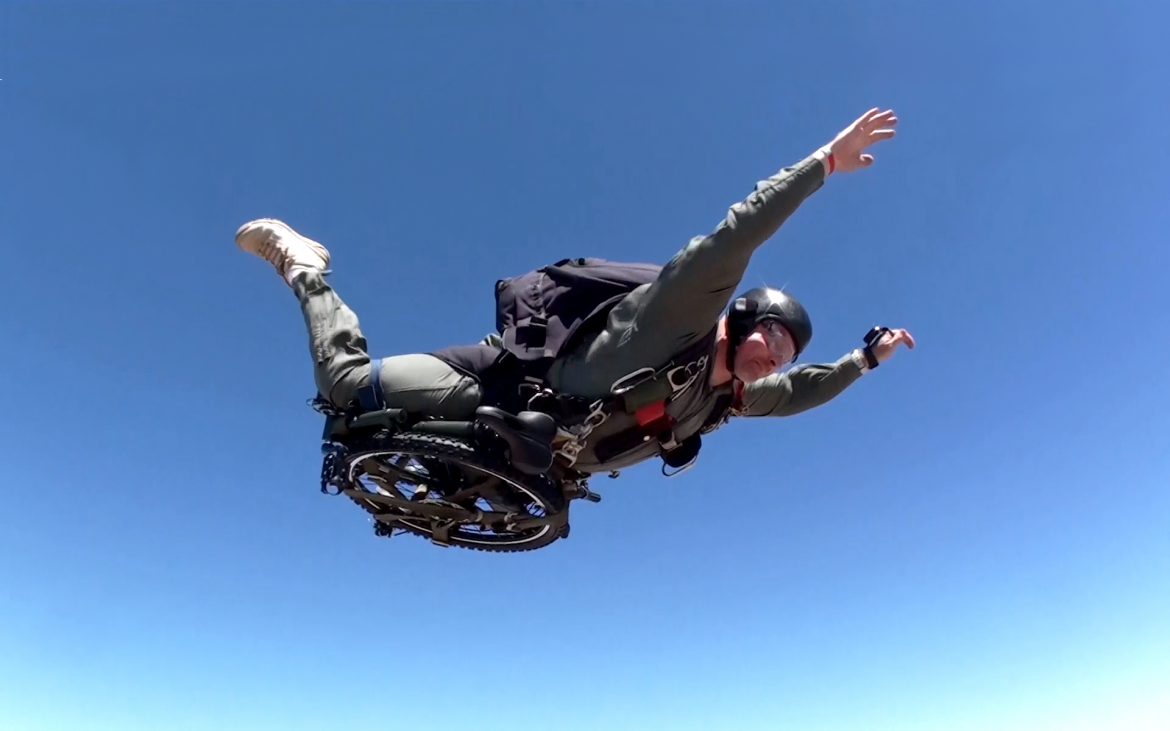
I have long been intrigued by folding bikes. They’re portable, take up minimal space, and despite the small wheels, they are surprisingly efficient, nimble, and fun to ride around town. Made with bike commuters in mind, they’re also durably built and considerably cheaper than the operating cost of a car or frequent use of public transit. For city-dwelling commuters, the portability and stowability of a folding bike make it a wonderful option for getting around town. But what about mountain biking? If you’re traveling a lot or have limited space in your home or car, the compact size of a folding mountain bike can certainly be intriguing. But are they capable? Do they shred?
Folding bikes also have a fascinating history, so if you’ll allow me to nerd out for a little bit, let us travel back to the 1870s. Yes, folding bikes have been around a lot longer than you might think. One could even argue that folding bikes may have been the very first purpose-built, all-terrain bikes.
Now, many inventors have tried to claim that they were the first to invent the folding bicycle, and history is rather unclear as to exactly who and when the first folding bicycle was invented. What we do know is that during the bicycle boom in the late 19th century, many inventors started tinkering with the concept of a portable bicycle. And there is a surprising number of early design sketches from around the 1870s and 1880s that included some kind of break-apart, folding, or otherwise disassemblable concept.
In the US, the first patent for a folding bike was filed by American inventor, Emmit G. Latta, in 1887. Latta aimed to design a “machine” that was not only “safe, strong, and serviceable, and more easily steered than the machines now in use,” but also to be foldable “so as to require little storage-room and facilitate its transportation.”
The First All-Terrain Bike?

Where it gets interesting — from a mountain bike point of view — is that there are quite a few claims that it was in fact, the French military invented the first folding bike, with a dual purpose of being an all-terrain bike.
The military folding bike concept was actually a partnership between French army lieutenant Henry Gérard and industrialist Charles Morel. Together they created a commercial model that hit the French markets in April 1895. It was wildly successful and the French military soon placed an order for a test fleet of 25 bikes to be used for a bicycle regiment led by Gérard.
The Romanian and Russian armies placed orders as well, and soon bicycles were adopted for military use across the globe as many countries started their own production of various folding bike interpretations.
Portable bikes allowed soldiers to cover more ground than being on foot alone, and soon battalions of bike infantry, scouts, messengers, and ambulance carriers were commonplace.
With the arrival of planes and paratroopers, the folding bike played an even bigger role. Light and small enough to be taken aboard airplanes, soldiers were able to be dropped from planes with parachutes and a folding bicycle in tow. Once landed, the bikes were quickly assembled, and the soldiers were then able to quickly cover significant ground.
English company BSA (Birmingham Small Arms) produced these paratrooper-specific bikes by the thousands, and the BSA museum has kept great records of their various models and uses.
Made of steel, these bikes weighed around 32 pounds, had a single-speed drivetrain, and could be equipped with rifle clips and cargo bags. The most iconic use of the BSA airborne bicycle in action was by the British and Canadian infantry on the invasion of Normandy, a.k.a D-Day, on June 6th, 1944.
Folding bikes remain in military use to this day, with the U.S. military deploying troops in Iraq and Afghanistan aboard the Montague Paratrooper mountain bike.
Tested: Full-size, folding mountain bikes

While commercial interest in folding bikes is still mostly centered around road biking and urban commuting use, purpose-built folding mountain bikes are out there. Some e-bike companies like Rad Bikes and Aventon rolled out a fat-tired, e-folding bikes just in the last year.
What I was intrigued by, however, were non-assisted, full-sized mountain bikes that have the added benefit of portability and compatibility for travel or for small-space living. Not only that, I wanted to find bikes that use standard components, are compatible with aftermarket upgrades, and — of course— are off-road capable.
I got two such bikes in for testing this winter: the military-style Montague Paratrooper Highline and the Change DF-812B. Both are vastly different in design yet feature full-size 27.5″ wheels, 20-speed drivetrains, disc brakes, and suspension forks.
The Montague Paratrooper Highline $1,296

Montague is a well-established American folding bike company with distributors in 20 countries worldwide. It is also the company that supplies the U.S. Military with its folding bikes for paratroopers and on-the-ground soldiers alike. As such, the bikes are incredibly durable and made to withstand all conditions. They also have a rather distinct design.
While the bike features full-size 27.5” wheels, standard Shimano Deore componentry, and a familiar-looking Rock Shox fork, at first glance, the frame seems to be missing a downtube. Instead, a single, oversized, flat tube has replaced the front triangle.

At close inspection, you’ll notice that a narrow triangle is in fact present but the downtube is actually found close and parallel to the seat tube. This is also where the folding mechanism is located. The benefit of this design is the use of a “concentric seat tube design”.
“In contrast to a traditional hinge that breaks the tubing and creates a point that can flex, our design allows the two halves of the frame to rotate around the seat tube and then overlap when in the riding position. The locking mechanism is actually in front of the axis of folding which limits any flex,” explained Ryan Walas, Marketing Manager at Montague Bikes.
The bike folds down to a 36” x 28” x 12” package and is aimed at urban dwellers who have limited space, and those traveling to the trails without a car rack. Another segment of customers include RV owners, #vanlifers, boat owners, and private pilots who need a bike that will fit their limited space while being capable of tackling the varied terrain they encounter in their travels
In its marketing material, Montague states that in creating these bikes, they “set out to create the highest performance folding bikes in the world.” So how did this one fare?

I’ll admit that the first thing I noticed was the sheer weight of the bike. It may be a small package when folded, but it’s not a light one. And while 34 pounds is by no means outrageous for a mountain bike, it is on the heavier end for a hardtail, and it’s something I felt while climbing.
Like the Change bike reviewed below, the first thing I did upon assembling the Highline was swap the short 560mm handlebars for some more reasonable 720mm bars. Bars greatly impact the handling of a mountain bike, and wider bars improve control and stability. Any bike we review here at Singletracks will likely come with bars upwards of 720mm in length, and so I wanted to give these folding bikes a fair shot.
The Highline comes in only two frame sizes —an 18” and 20” inch— and at 5’5”, the reach with the 90mm stem was a tad outstretched for me, so I swapped the stem for something shorter. Even with my tweaks, however, I would have maybe preferred a smaller size.
| Frame Material | Custom drawn 6061 Series Aluminum with DirectConnect System. |
| Fork | RockShox Judy |
| Drivetrain | Shimano Deore 2 x 10 |
| Crankset | Suntour 175mm carnk arms with 38/24 chainrings |
| Cassette Range | 11-36T |
| Wheels | Montague branded 27.5″ Alloy, 32 hole. Double Wall w/ Eyelets. |
| Tires | Kenda Kadre. Knobby. 27.5″ x 2.10”. |
| Handlebars | Kalloy. Alloy, 5-degree backsweep. 560mm length. |
| Brakes | Tektro Auriga Hydraulic |
| Folded Size | 36” x 28” x 12” |
| Claimed Weight | Approximately 30Lbs |
| Actual weight w/ pedals | 34.6 Lbs |
Once I got over how the bike looks, I was surprised to find the weight to be fairly evenly distributed, despite the fact that the extra tubing, folding mechanism, and drivetrain are in the rear half of the bike. More importantly, I never worried about the folding mechanism coming undone mid-ride or any other safety issues.
With a MSRP of $1,296, it is important to remember that this is a budget bike with entry-level components. For that, they do their jobs just fine even if one bottoms out from time to time. The Tekto hydraulic brakes and Deore shifting even withstood some excessively muddy winter riding.
The overall ride feel is definitely more on the long haul cruiser end of the spectrum rather than a XC racer. Whereas the durability and stability are immediately apparent, it lacks in snappiness or playfulness. I don’t doubt that this bike could carry bags for an overnighter, serve as a heavy-duty commuter, or be left out in the Afghani desert for weeks on end. Likewise, with a 24-36 low gear, you should be able to slowly spin your way up most hills, and with some extra air in the fork, you will even be able to conquer some rougher terrain. Yet while it’s capable and utilitarian, it lacks the responsiveness or nimbleness that make hardtail mountain bikes so fun to ride.
I will say that the Montague folding mechanism is the most user-friendly I have tried, and it takes but 20 seconds to take off the front wheel and fold the bike in half.
The Change Bikes DF-812B, $1,880

Established in 2009, Change Bike is a Taiwanese company that specializes in full-sized folding bikes. They’re available in North America via FlatBike.com, who informs me that some three dozen of these DF-812B models are already out there on American trails.
Their main customer base are apartment-renting MTB enthusiasts and RV owners with some boaters and private pilots sprinkled in.
Their patented designs are claimed to be lighter, stronger, and more portable than other folding bicycles as well as 100% compatible with aftermarket accessories and easy to maintain. They’re also the only folding bike on the market to have obtained the ISO-4210 safety certification for MTB frames.
While Montague is their largest and most-established traditional competitor, Bob Forgrave at Flatbike.com revealed that “since a Changebike has a real MTB frame that rides like an MTB, the biggest actual competition comes from folks deciding whether to combine a traditional aluminum hardtail (Trek, Specialized, Giant) with carrying equipment [aka external car racks] or simply get a full-size MTB that rides inside [the car].”
This Change full-sized mountain folding bicycle was designed to “initiate a new era in the folding bike market.” So let’s see how it rides.
The bike arrived in a box about half the size of a regular MTB and with three times the accessories. Two sets of pop-off pedals, a carrying bag, a saddlebag, and even some Allen keys were included. There were also a lot of instructions. This was handy because the folding and refolding of this bike took some practice and was less intuitive than the Montague mechanism reviewed above.
Once assembled, the Change 812 looked very much like a regular bike. With the full-size triangle, 27.5” Mavic wheels, internally-routed cables, Shimano Deore component package, hydraulic brakes, and a Fox Float34 fork — this bike looks like a modern hardtail rather than a folding bike with some knobby tires.
Like the Montague, this bike came with really narrow, 580mm handlebars. While I understand the packing convenience of narrow bars, I much prefer wider bars for handling so I swapped these out for 720mm bars.

The pop-off pedals were a first for me, and a neat invention that, as the name suggests, allows you to quickly pop your pedals on and off the crank arms without the need of a pedal wrench or Allen key.
Riding this bike was a really pleasant surprise. With the addition of the wider bars, the bike feels like a regular aluminum hardtail. It’s not the liveliest of hardtails but despite its 31-pound weight, it climbs well and is a stable descender. Even in the winter mud, the Kenda tires maintain decent grip and the bike is plenty responsive when pushed hard into corners.
| Frame Material | 7005 aluminum, double-butted construction, |
| Fork | FOX Performance 32 Float |
| Drivetrain | Shimano Deore |
| Crankset | Deore with 170mm crabk arms and 38/24 chainrings |
| Cassette Range | 11-42T |
| Wheels | Mavic Crossride 27.5 |
| Tires | 2.1 Kenda Nevegal Sport |
| Handlebars | Aluminum Barbore in 580mm length |
| Brakes | Shimano shimano BL-M615 |
| Folded Size | 30 x 37 x 15 in. |
| Claimed Weight | Approximately 30Lbs |
| Actual weight w/ pedals | 31.6 Lbs |
The fork alone is a big upgrade from the Montague build and while entry-level, the Deore package does its job.
It was easy to forget I was on a folding bike until looking down and realizing that the downtube and the secondary locking device extends a fair bit beyond the bottom bracket. It’s not apparent in the ride feel but there is a risk of clipping it while traversing rocky terrain.
The low gearing and numerous eyelets in the frame are a nice touch for those wanting to add extra cages or carry gear for long days in the saddle.

My only worry with the Change bike would be maintenance. With two separate locking mechanisms, there are added moving pieces and you’d have to be diligent about cleaning the bike. You wouldn’t want sand or dirt in there.
For those prioritizing space, the Montague did fold down into a smaller package but you get a lot more bike in Change.















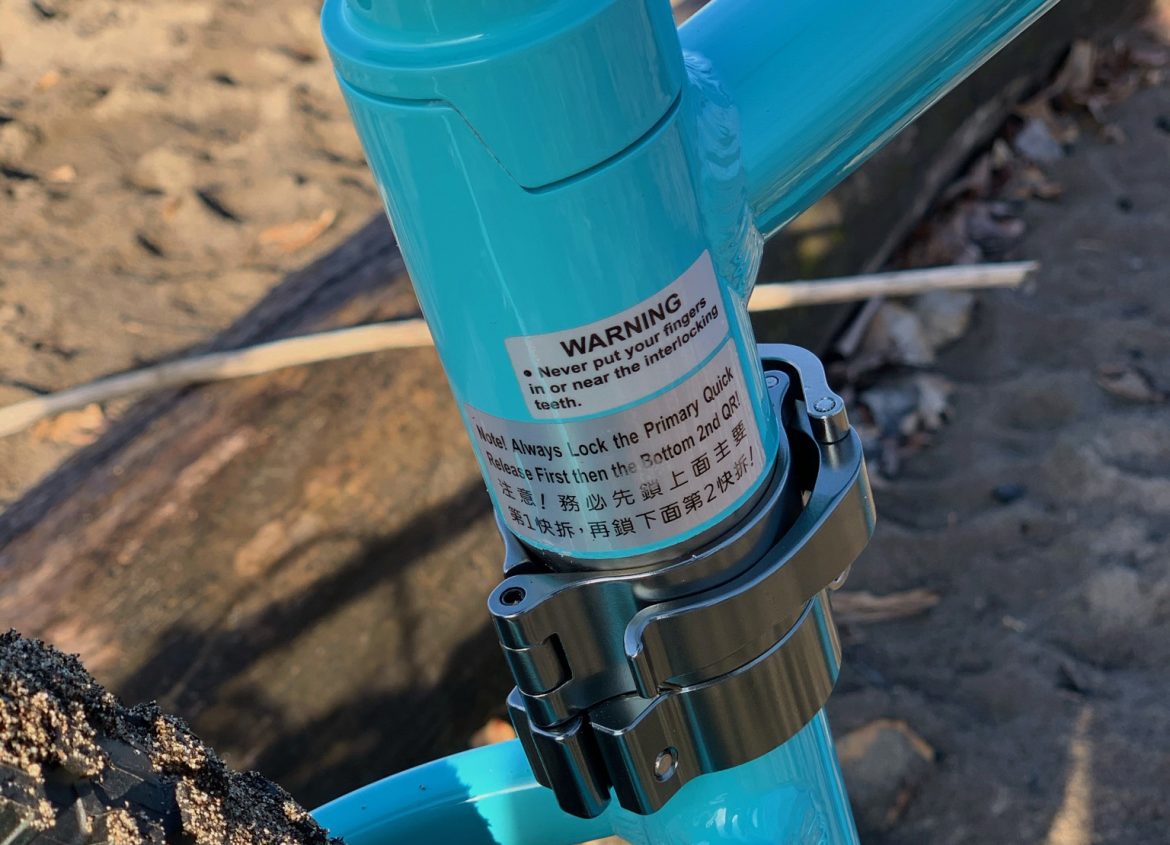
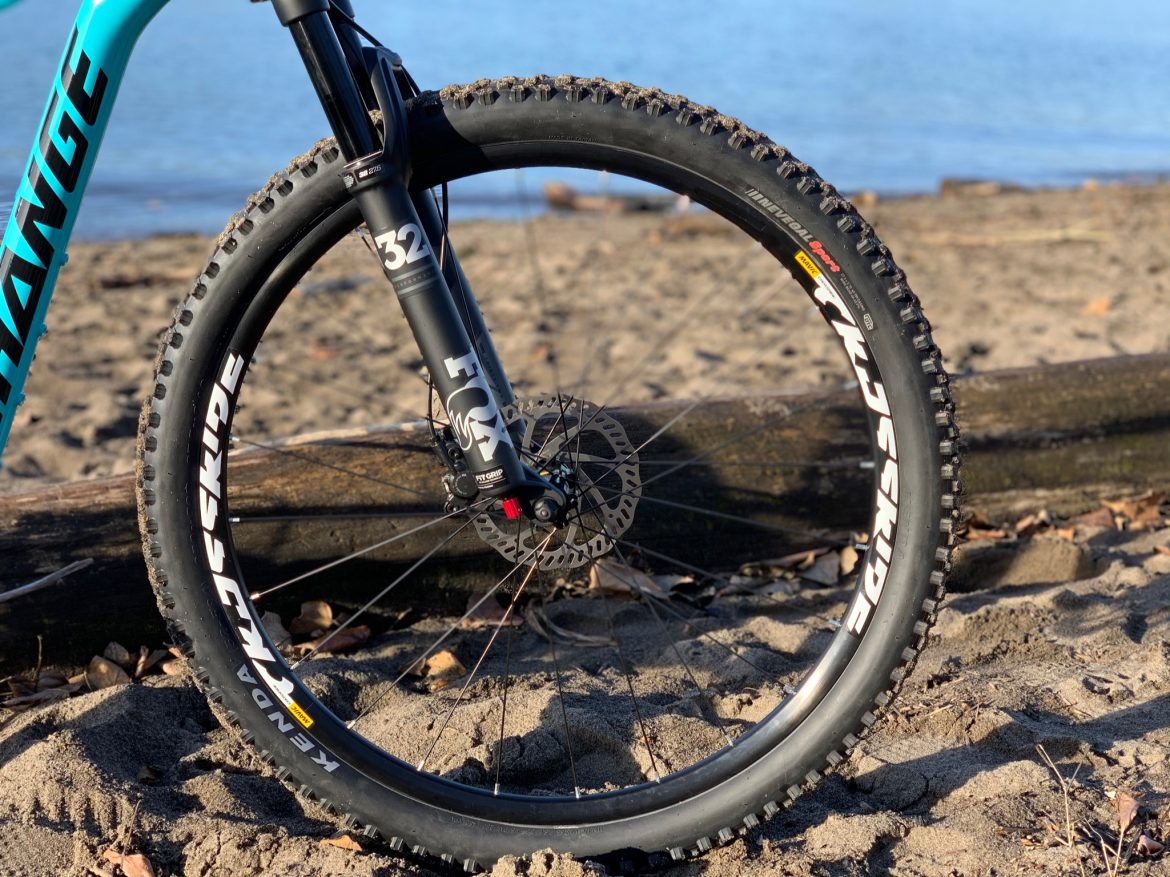
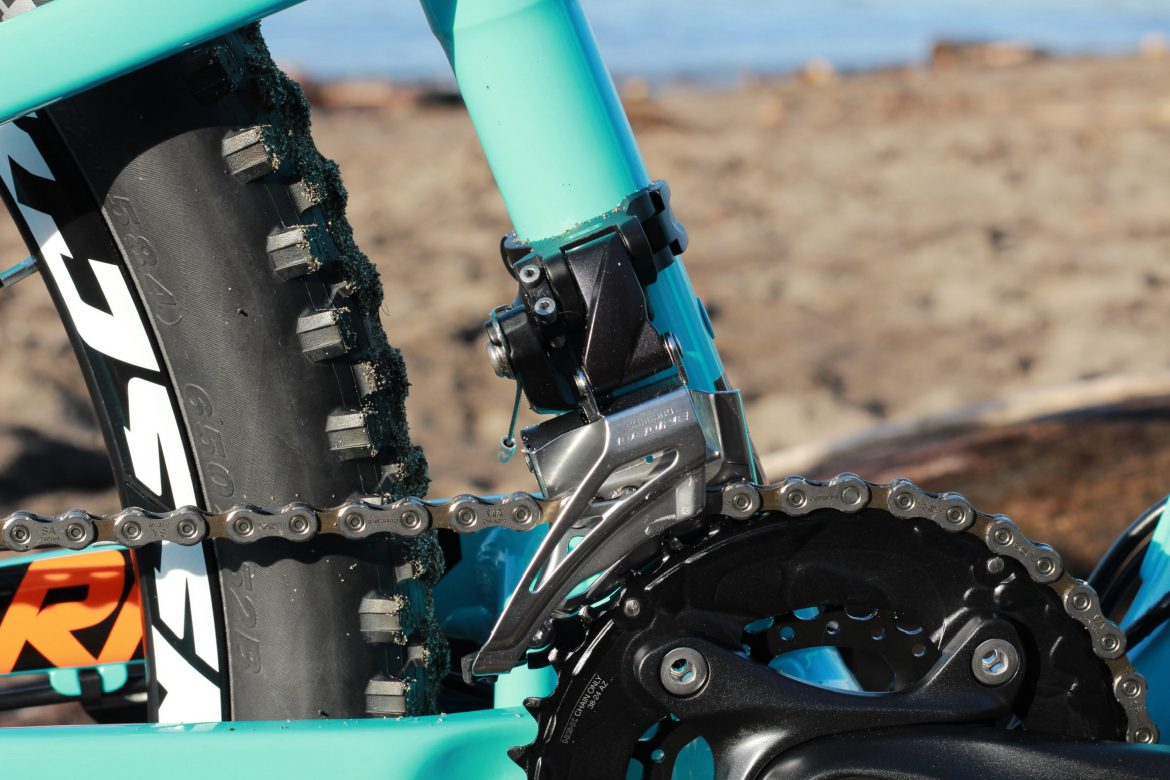




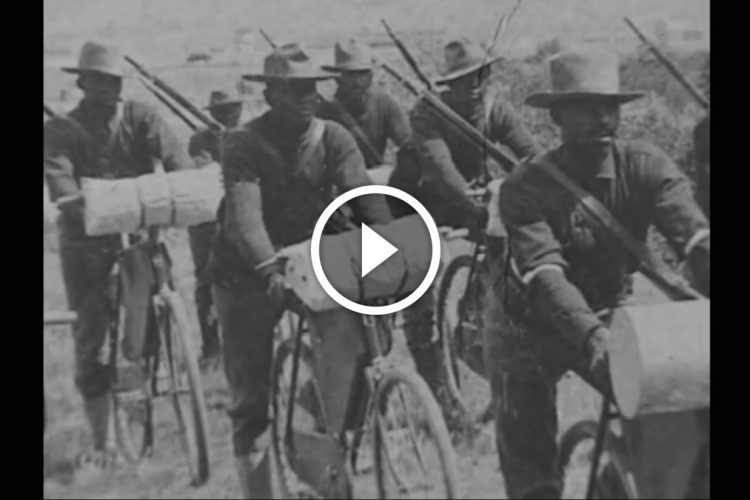






5 Comments
Mar 15, 2021
Mar 16, 2021
Mar 16, 2021
https://singletrackworld.com/2016/08/eurobike-2016-folding-enduro-bikes-by-pole/
https://bikerumor.com/2016/01/11/long-low-and-easy-to-stow-pole-bicycles-offers-the-slackest-folding-29ers-available/
Mar 17, 2021
Mar 19, 2021
Also, rode 100+ km for several times, both road and XCM. Got average results. On short, it's more like a mission bike indeed. And it is a mountain bike no doubt.